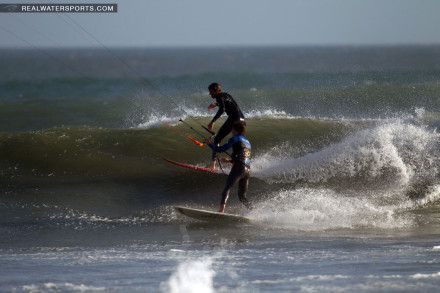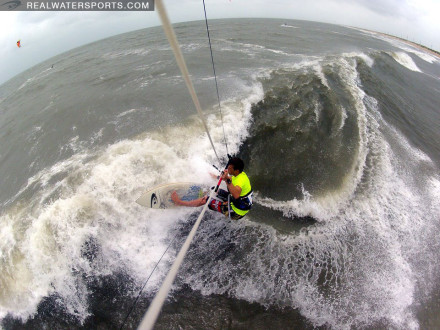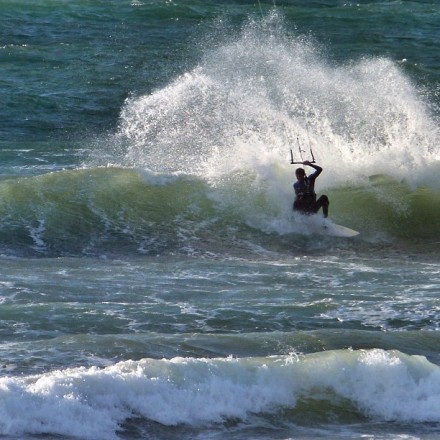
If you’re a surfer and know how to kite – there’s no reason not to take kite gear on your next surf trip! Here’s 5 tips to help make it happen:
1. You can get away with only one kite
If your primary goal is to surf on your trip, I find it’s easier to just take one kite. Most of the time I’ll choose an 8m or a 9m (I’m 185lbs) but choose the one size that’s right for you – we can help! The key is to be able to get out there when its averaging 20mph or more. If it’s less than that – you’re on a surf trip so go surfing!
2. Compromising your kitesurfing riding style is ok!
If you usually like to do a mixture of riding waves and punting strapless airs when you are at your home beach – don’t be afraid to focus only on riding waves for your next trip. If you’re travelling somewhere on a surf trip, the waves are probably going to be decent so try leaving the aerial attack at home. Here’s why:
– No airs mean less chance of damaged or broken surfbaords.
– You can ride one of your regular surfboards and don’t need a dedicated kitesurf board.

3. Invest in a decent triple board bag:
A decent triple board bag is all you need to make the most of almost any location. I travel with the Liquid Force World Surf Traveller and here’s how I pack it:
– 3 x surfboards (a step up and 2 daily drivers)
– 1 x 9m or 8m kite (place the rolled kite lengthways on top of your boards)
– 1 x kite bar
– 1 or 2 x wetsuits (as required)
– Kite Harness
– Towel
– Repair Kit
– Small Pump
– Fins, Leash, Wax.
4. Be sensitive to surfers on the trip:
If you are travelling with a group of surfers and you are the only one who kites as well – try not to let kitesurfing take over. More than likely, everyone else will do whatever it takes to score good surf when the wind comes up (drive 2 hrs, hunt all day etc…).
You can fight it and try to steer the group towards a kite session but they don’t want to sit on the beach and watch you kite (and you’re unlikely to spend the time teaching them). Instead, wait until it’s really blown out and everyone has accepted that they are done for the day. That’s when it’s time to kite! The rest of the group will be way more stoked on your session and you are far more likely to convince someone to come and give you a launch!
5. Don’t leave your kites at base if you’re unfamiliar with the area:
If you’re going to take the time to bring kite gear with you on your trip – have it with you at all times!
When you are travelling in an area you aren’t familiar with – don’t leave your kites at base because you don’t think it’s going to be windy that day. You never know when the wind will pick up and you’re an hour away from your hotel hunting for waves without kite gear!


